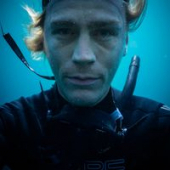-
Posts
130 -
Joined
-
Last visited
-

Saver Node only has jpg exr output
Jussi Rovanperä replied to Russell Leavitt's topic in DaVinci Resolve
you can only export still sequences with the saver in fusion page in Resolve. The saver in Fusion Studio has options for video files too. -

Mattes in relation to node order of operations
Jussi Rovanperä replied to Benjamin Handler's topic in DaVinci Resolve
or use node sizing instead of edit sizing, that way the matte stays in place. -

Is using HDMI ports on a laptops reliable?
Jussi Rovanperä replied to Mark Mulcaster's topic in Monitors/Projectors
If you have means to verify that the signal coming out of the hdmi is correct, then why not? -
I think wave should work, but the controls are fixed and you can't change them in the tangent mapper.
-

Track paint and cloning in DR Fusion
Jussi Rovanperä replied to Cristian Baitg's topic in DaVinci Resolve
Most of the time i'll steady the shot, then paint and then add the movement back (the exact inverse of the steady). So I'm not tracking the paint at all.- 11 replies
-
- 1
-

-
- davinci resolve
- remove
-
(and 7 more)
Tagged with:
-

Setting up a new Flanders Scientific DM240
Jussi Rovanperä replied to César Ricardo Alpuche's topic in Monitors/Projectors
The FSI monitors are factory calibrated and should be accurate out of the box. I think the brightness is set to 100 nits by default, and the monitor expects video levels by default, so just check that the monitor output from your software is set to video levels. And check that gamma and colorspace in the monitor are what you want to use. That's all. I think when I got my FSI, i didn't have to change any settings, just plugged it in and everything was correct for rec709 by default. Calibration-wise I would just verify the calibration time to time with a puck, and if it starts drifting, send the monitor to FSI for free recalibration (you pay the shipping) -

Copy pasting parts of a node tree to other shots
Jussi Rovanperä replied to Alexander Isaksson's topic in DaVinci Resolve
couple of ways: 1. Right click the gallery and there is "copy grade - preserve number of nodes", you can choose how many nodes from the beginning of the node tree are preserved when copying grades. 2. go to preferences - user - color, and select Ripple mode: all values are copied. Then you can use "Ripple node changes to selected clips" to copy the settings of one node to the same node on several clips. -
Resolve will automatically show the red clip instead of the folder, but it's important to import the rdc folders for two reasons: long takes that are split into multiple r3d files are seen as one clip, and the number suffix (001,002 etc) is removed from the clip name.
-

"Use legacy Log grading ranges and curves"
Jussi Rovanperä replied to jose arce's topic in DaVinci Resolve
The legacy roll off is harder. the ranges are at different places (high range 0.67 is really high for log footage. lot of times the whole signal is under that) Also the default 0.5 pivot is too high. The processing is different, the legacy master shadow/mid/highlight controls feel a bit more like Y-controls. I kind of like that.- 1 reply
-
- 1
-

-
To have the clips on separate video tracks in the edit page. No special routings in the color. Top clip has alpha, and both can be graded separately.
-
There is a predivide/premultiply option in the b/c node that needs to be on if the input has an alpha.
-
For some simple screen replacement-style things, you could leave the original clip on video layer1, then duplicate that clip to layer 2 and do the fusion comp there, but only use the original clip for tracking, and output just the screen with alpha. Then you would have background and the screen on separate video tracks that can be graded separately. But most of the Fusion stuff I've done has been in the standalone Fusion, because the Fusion page in Resolve 15 has been so unstable and the ram cache has not worked. We've just recently switched to Resolve 16.
-
Change the clip into a compound clip and open that in Fusion, then it would have the grade baked in.

